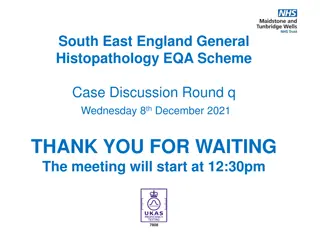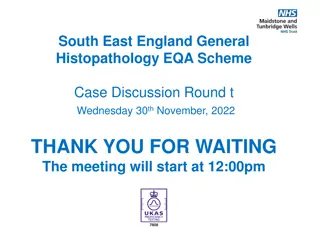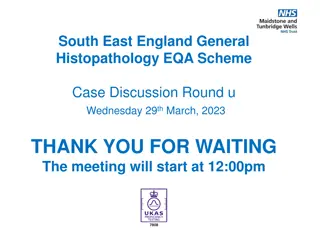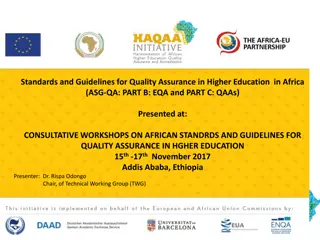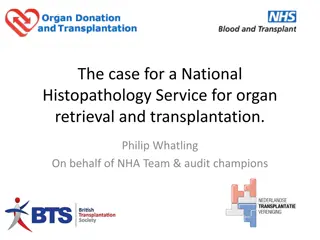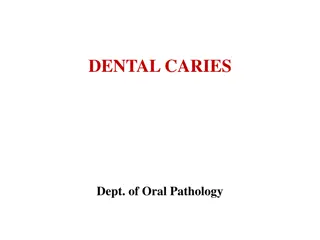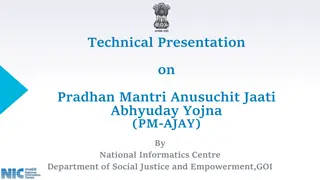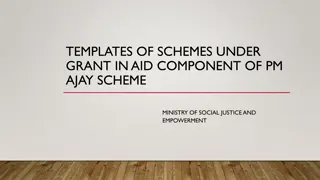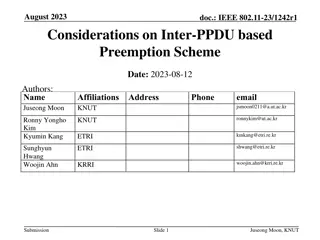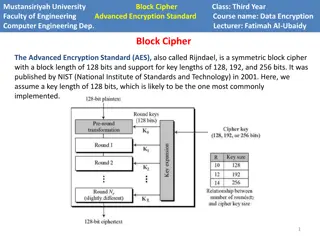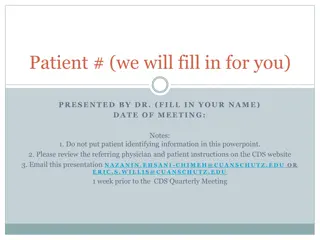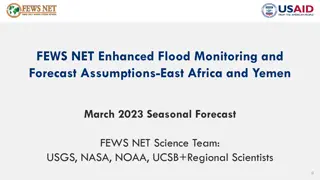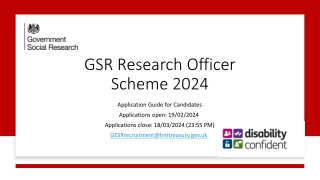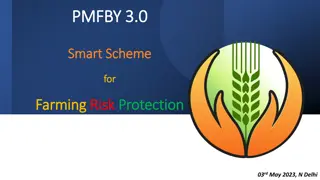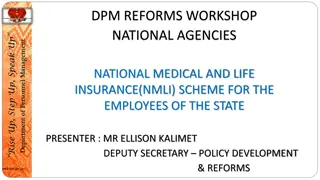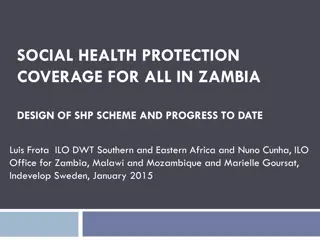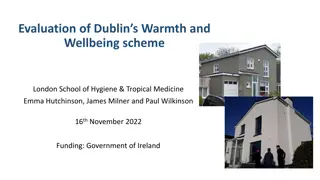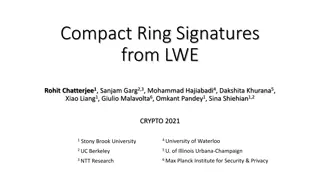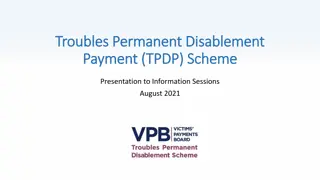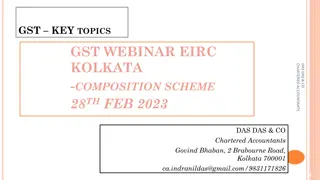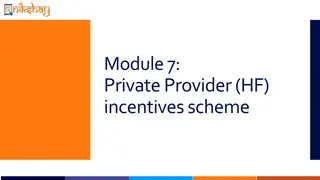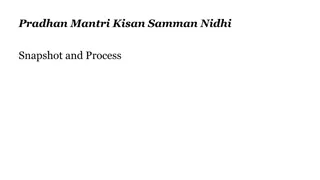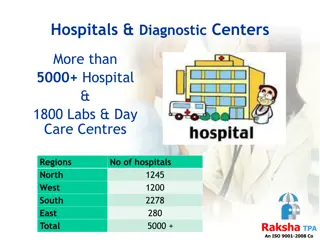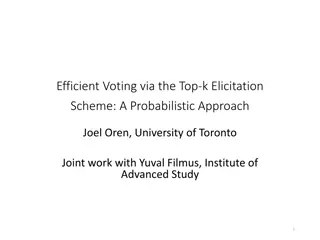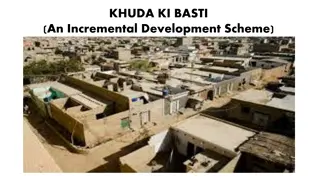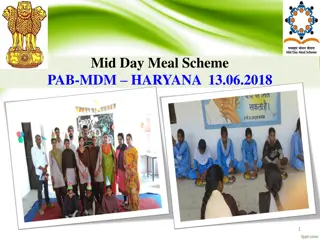South East England General Histopathology EQA Scheme Case Discussion Round
Meeting scheduled on Wednesday, March 23, 2022, for the South East England General Histopathology EQA Scheme Case Discussion Round. The agenda includes case reviews, meeting etiquette, terms of reference, and round r review details. Participants are expected to follow meeting protocols, engage in case consultations, and ensure completion of the round effectively. Valuable insights and feedback are welcomed for continuous improvement.
Download Presentation

Please find below an Image/Link to download the presentation.
The content on the website is provided AS IS for your information and personal use only. It may not be sold, licensed, or shared on other websites without obtaining consent from the author. Download presentation by click this link. If you encounter any issues during the download, it is possible that the publisher has removed the file from their server.
E N D
Presentation Transcript
South East England General Histopathology EQA Scheme Case Discussion Round r Wednesday 23rdMarch, 2022 THANK YOU FOR WAITING The meeting will start at 12:00pm
Meeting Etiquette 4 3 2 1 Mute your mic if you re not speaking Wait for the Chair person to call on you before you unmute your mic Use the raise hand Or chat feature to raise questions or share ideas If your camera is on, everyone can see you Remember Everyone can see your chat comments 6
Agenda 1. Welcome & Introduction of Scheme Staff 2. Meeting Terms of Reference 3. Case and Preliminary Score Review a) Case 841 850 b) Educational Cases 851 - 852 4. Questions / comments
This meeting is held between the end of case consultation and results being issued and now replaces the additional final week of the case consultation. This meeting is an educational exercise; an opportunity to explain the reasons behind scoring and merging or why cases were excluded. For clarity, this is not an opportunity to alter merging decisions, as participants have that opportunity during the Case Consultation period. An additional CPD point will be awarded to those who attend, and it will be added to the annual certificate. Please note you have to stay for >50% of the meeting to gain this point (attendance times are monitored automatically by Teams) We always welcome any feedback good or bad you may have about today.
CaseConsultation 155 responses received for round r 95 responses received for consultation 61.29% QUORATE Thank-you for submitting responses and consultation on time you have made completion of this round much easier for all Basic Rules regarding Case Consultation and Merging Diagnostic categories: If you are exempt from a category, your consultation response to that case is also not counted Each case must have received a consultation response from at least 50% of those that answered it For a merge to be automatically accepted, more than 50% of consultation respondents must agree Between 40-50% agreement, the merge will be accepted only with the agreement of the Organiser (i.e. clinically valid). The consensus CAN be over-ridden if there are clinically valid reasons for doing so. These are recorded, and reviewed at the AMR.
Case 841 Miscellaneous Specimen: Core biopsy from Coccyx lesion Submitted Diagnosis: Chordoma Submitted Clinical Macro Immuno Image link Preliminary Results Final Merge Results M59. Destructive lesion within the coccyx. Core biopsy Immunohistochemistry reveals expression of AE1/3, CK8/18, EMA and Brachyury by the tumour. There is very occasional and weak expression of S100 by scattered cells within the tumour but the vast majority of the tumour cells are negative. The tumour is negative for desmin and CD34. Click here to view digital image 1. Chordoma 10.00 None (100%) General Comments Nice example
Case 842 Respiratory Specimen: Rt Lung Biopsy Submitted Diagnosis: Metastatic breast carcinoma Clinical Macro Immuno Image link Preliminary Results Final Merge Results M32. US biopsy lingular mass 18G. New mass lingula. Known breast cancer 2017. New lung cancer? One fine needle core, grey, cream and slightly yellowish in colour measuring 20mm long POS: CK7, MNF116, CA125 (focal), ER (3+5=8), Gata 3, PR (1+3=4). NEG: CK20, CDX-2, TTF1, PSA, HSA, PSAP, Napsin A. Click here to view digital image 1. Metastatic breast carcinoma 9.92 2. Male Breast Cancer 0.07 3. Primary lung adenocarcinoma 0.01 1 & 2 (75.00%) General Comments: Immunohistochemistry does not support lung adenocarcinoma Immunoprofile in keeping with metastatic breast cancer.
Case 843 Breast Specimen: Breast Submitted Diagnosis: Adenosis, conventional and microglandular types (B3). Clinical Macro Immuno Image link Preliminary Results Final Merge Results F78. B3 Lesion on previous biopsy Left breast VAE. Fibrofatty tissue 50x30x7mm IHC: S100 +ve, ER, PR, p63-ve Click here to view digital image 1. Microglandular Adenosis 8.27 2. Atypical microglandular adenosis 0.80 3. Adenomyoepithelioma / 0.15 myoepithelioma/myofibroblastoma 4. Acinic cell carcinoma of breast 0.20 5. Invasive ductal carcinoma 0.07 (and previous biopsy cavity) 6. Adenomyoepithelial adenosis 0.07 7. Tubular adenosis / adenoma 0.10 8. (Nodular) adenosis 0.24 9. Microglandular hyperplasia 0.07 10. Carcinoma arising in MGA 0.03 1, 2 & 9 (46.67%) 1 & 2 (51%) 1 & 9 (51%) General Comments: I don t think these can be merged, this is a difficult breast case, looks like microglandular adenosis, but has too many mitosis. This is MGA +/- atypia Merge all the benign entities x 2 Remove from final analysis Microglandular adenosis can have mitotic activity I think is atypical MGA but I think it is beyond the remit of a general pathologist. Not suitable, needs expert review I thought this was a nice example surprised so many differentials
Case 844 Endocrine Specimen: Adrenal Lesion Submitted Diagnosis: Myelolipoma Clinical Macro Immuno Image link Preliminary Results Final Merge Results F39.Incidental adrenal lesion on CT Haemorrhagic well circumscribed lesion within adrenal N/A Click here to view digital image 1. Myelolipoma 9.36 2. Myelofibroma 0.07 3. Extramedullary haematopoesis 0.50 4. Angiomyolipoma 0.07 None (68.48%) General Comments: Half a point for option 3 Only 1 is correct but 2 and 3 are safe . 4 is a neoplasm and could prompt unnecessary investigation and follow-up (e.g. TSC). Myelolipoma is a defined lesion rather than extramedullary haematopoiesis Is myelofibroma even a diagnostic entity? The features are specifically diagnostic for this entity All benign
Case 845 Lymphoreticular Specimen: Lymph Node Left Axilla Submitted Diagnosis: Kikuchi-Fujimoto disease (proliferative phase) Clinical Macro Immuno Image link Preliminary Results Final Merge Results Occasional small residual follicles are present with CD20. CD3 shows increased T-cells with approximately equal numbers of CD4 and CD8, the latter also staining with TIA. F22. Oriental name. painful raised LN left axilla ?Reactive A core of tissue, measuring 9 x 2 mm with a diameter of less than 1 mm. Click here to view digital image 1. Kikuchi lymphadenitis / disease 9.79 2. T cell lymphoma 0.07 3. Infectious mononucleosis 0.07 4. Blastic plasmacytoid dendritic cell 0.07 neoplasm None (91.86%) There are MPO-positive macrophages. CD123 shows numerous plasmacytoid dendritic cells. CD 30 shows scattered activated cells. MUM1 stains only a few plasma cells and lymphoid cells. ZN, PASD and Warthin- Starry negative for infectious organisms. General Comments All mentioned above are discrete diagnosis Only 1 is correct; 2 and 4 are very dangerous Numbers 2&4 are malignant diagnosis, so inappropriate. The immunoprofile is not typical for EBV related infections Immuno profile suggestive of both diagnosis Each distinct entity
Case 846 Gynae Specimen: Fibroid Submitted Diagnosis: Adenomatoid tumour Clinical Macro Immuno Image link Preliminary Results Final Merge Results F34. Primary subfertility and pain. Fibroid on anterior wall of uterus Multiple firm, pale tissue fragments total 20mm maximum. These have a pale solid appearance on sectioning. AE1-AE3 and calretinin were positive, BerEP4 was negative. Click here to view digital image 1. Adenomatoid tumour 9.50 2. Adenomatoid tumour within leiomyoma 0.20 3. Leioadenomatoid tumour 0.13 4. Adenomatoid tumour with leiomyoma 0.13 5. Multilocular peritoneal inclusion cyst 0.02 6. Benign multicystic mesothelioma 0.02 1, 2, 3, 4 (62.22%) General Comments: 3 Not a terminology commonly used, don t think its described. 1-4 similar and safe (2 and 4 are same) This is an adenomatoid tumour +/- a leiomyoma These all describe the same histopathological features and are benign. Leiomyoma with multiple foci of adenomatoid lesion Synonymous diagnosis
Case 847 GI Specimen: Gastric biopsy Submitted Diagnosis: Gastric mucosal calcinosis. Clinical Macro Immuno Image link Preliminary Results Final Merge Results F70. Dyspepsia and retrosternal burning. Stomach: nodular mucosa with a whitish coating involving the gastric body. Six fragments up to 4mm N/A Click here to view digital image 1. Gastric mucosal calcinosis 8.84 2. Heterotopic pancreas / pancreatic acinar 0.13 metaplasia 3. Dystrophic / metastatic /NOS calcification 0.23 4. Foreign material in lamina propria (looks like 0.08 lanthanum) 5. Fundic gland polyp 0.08 6. Iron pill gastritis /? Siderosis 0.42 7. Malakoplakia / giardiasis / amebiasis 0.03 8. PPI therapy changes 0.10 9. Hypergastrinemia 0.03 10. Normal gastric body mucosa 0.06 1, 3 (68.09%) General Comments Probably best to exclude this case x 4 Glass much easier than digital for spotting calcification Typical histological features of mucosal calcinosis Difficult to merge - but merge category suggest distinct entity Maybe educational case
Case 848 GU Specimen: Kidney Submitted Diagnosis: Clear cell renal cell carcinoma (Grade 3) Clinical Macro Immuno Image link Preliminary Results Final Merge Results F54. Left kidney Left nephrectomy and adrenal gland. Kidney 150x85x80mm with adrenal gland 55x30x20mm. Superior pole of kidney nodular yellow tumour 80x70x70mm. N/A Click here to view digital image 1. Clear cell renal cell carcinoma 9.38 2. Renal cell carcinoma 0.21 3. Chromophobe RCC 0.35 4. Adrenal cortical carcinoma 0.05 5. MiT family translocation RCC 0.01 1, 2 (68.60%) Patchy haemorrhage bulges into perinephric fat. Involves renal vein. General Comments Only 1 is correct; 2 is safe in DGH up to a point if reviewed in centre; 3-5 cause clinical issues. 2 is very general but technically correct Ideally, renal cell carcinoma should be sub-typed as this provides prognosis. 1,2,3,5 depends on whether we are expecting sub-typing The cytological features are not typical for chromophobe RCC. MiT family translocation RCC are very pleomorphic (ISUP grade 4) and Adrenocortical CA is usually very necrotic Immunohistochemistry is needed for most renal cell carcinomas especially with the emergence of new entities
Case 849 Skin Specimen: Punch biopsy of skin, chest wall Submitted Diagnosis: Granular cell tumour Clinical Macro Immuno Image link Preliminary Results Final Merge Results F49. Right chest wall, suspicious subcutaneous lesion 4mm punch biopsy of skin, 7mm deep. Pan Keratin - negative, S100 - positive, CD68 - positive Click here to view digital image 1. Granular cell tumour 9.92 2. Granular cell schwannoma 0.08 1, 2 (32.98%) This is a Clinical Over-ride decision. The term granular cell schwannoma is listed in Pathology Outlines as a synonym. No clinical consequences General Comments: Same prognosis (benign) and similar immunoprofile Each distinct entity
Case 850 Endocrine Specimen: Adrenal Lesion Submitted Diagnosis: Adrenal phaeochromocytoma Clinical Macro Immuno Image link Preliminary Results Final Merge Results M65. Left lower renal pole Bosniak 3 cyst + adrenal lesion Yellow cystic renal tumour 35mm and tan congested nodule in adrenal measuring 20x17x12mm Adrenal nodule: Synaptophysin, Chromogranin A and S100 positive; Click here to view digital image 1. Pheochromocytoma 9.79 2. Adrenal hyperplasia 0.07 3. Adenoma 0.13 4. Adrenocortical neoplasm 0.01 None (81.52%) Melan A, Calretinin, pancytokeratin (AE1/AE3) negative General Comments: Only 1 is correct; has important implications that 2-4 don t raise. 2 not hyperplasia this is a neoplasm. 3 immunopattern does not fit. 4 too vague Two separate entities
Case 851 Skin (EDUCATIONAL) Specimen: Right forearm skin Clinical Macro Immuno Image link Suggested Diagnosis (Top 10) Submitted Diagnosis Click here to view digital image M20. ?Blue naevus right forearm. R/O MM Ellipse 11x8x7mm with 7mm bluish macule and 4mm underlying brown lesion Beta catenin + cyclin D1 expressed throughout lesion 1. Deep penetrating naevus x 123 2. Blue naevus x 16 3. Cellular blue naevus x13 4. Deep Penetrating Blue Naevus x 6 5. Benign naevus x 2 6. Combined naevus (penetrating / cellular blue) 7. Dermatosis papulosa nigrans 8. Malignant melanoma 9. Deep penetrating naevus naevocellualris 10.Langerhan s pigmented histiocytosis Deep penetrating naevus
Case 852 Respiratory (EDUCATIONAL) Specimen: BMT Clinical Macro Immuno Image link Suggested Diagnosis (Top 10) Submitted Diagnosis Click here to view digital image M69. Thrombocy topenia - mild anaemia. ?NHL/ ?MDS ?ITP Two pieces of haemorrhagic and cream trephine biopsy the longest piece measures 14mm long Positive for CK7, MNF116, TTF1 and Napsin. 1. Metastatic lung adenocarcinoma x107 2. Metastatic lung carcinoma x 26 3. Metastatic poorly differentiated x 3 carcinoma 4. Metastatic lung adenocarcinoma x 3 with features of MDS in bone marrow 5. METASTATIC LUNG x 3 ADENOCARCINOMA AND MYELODYSPLASTIC SYNDROME 6. Metastatic TTF1 Positive Adenocarcinoma of Lung Origin 7. Metastatic adenocarcinoma of lung and marrow hypercellularity ?reactive 8. Bone marrow involvement by metastatic non-small cell lung carcinoma 9. Metastatic Pulmonary Carcinoma in Bone 10.Sclerotic adenocarcinoma, immuno profile indicates lung primary, PSA -ve indicates not prostate Poorly differentiated adenocarcinoma Negative for CK20, CK56, CD56, CDX2, PSA, PSAP, PAX8, OCT34 and p63.
4. Questions Comments Suggestions Feedback Thank you for attending. This presentation can be found on the EQA website from next week.


